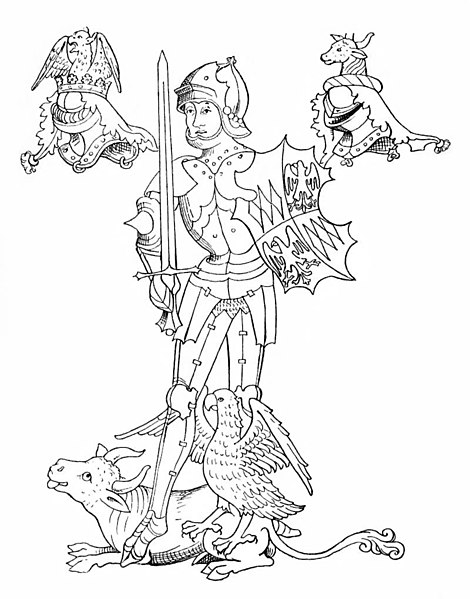Suo jure is a Latin phrase, used in English to mean 'in his own right' or 'in her own right'. In most nobility-related contexts, it means 'in her own right', since in those situations the phrase is normally used of women; in practice, especially in England, a man rarely derives any style or title from his wife although this is seen in other countries when a woman is the last heir of her line. It can be used for a male when such male was initially a 'co-lord' with his father or other family member and upon the death of such family member became the sole ruler or holder of the title "in his own right" (alone).

State portrait of Maria Theresa, which depicts her as the "first lady of Europe" in a precious dress of Brabant bobbin lace. To her right are Hungary's Crown of Saint Stephen, Bohemia's Crown of Saint Wenceslas and the Austrian Archducal hat as symbols of her suo jure reigns. The portrait is in the centre of the Hall of Ceremonies in Schönbrunn Palace (by Martin van Meytens, c. 1752)
Richard Neville, 16th Earl of Warwick
Richard Neville, 16th Earl of Warwick, 6th Earl of Salisbury, known as Warwick the Kingmaker, was an English nobleman, administrator, landowner of the House of Neville fortune and military commander. The eldest son of Richard Neville, 5th Earl of Salisbury, he became Earl of Warwick through marriage, and was the wealthiest and most powerful English peer of his age, with political connections that went beyond the country's borders. One of the leaders in the Wars of the Roses, originally on the Yorkist side but later switching to the Lancastrian side, he was instrumental in the deposition of two kings, which led to his epithet of "Kingmaker".
Warwick as drawn in the Rous Roll. He displays on his shield the arms of Montagu quartering Monthermer. The bull's head is the crest of the Neville family, the eagle is the crest of Montagu.
Middleham Castle was Warwick's favourite residence in England. In the late 1450s business in Calais kept him away from it for periods.
Painting by Henry Tresham depicting Warwick cutting the throat of his own horse and vowing not to abandon the battlefield prior to the Battle of Towton
The Battle of Barnet, where Warwick was killed. Edward IV can be seen on the left, wearing a crown, Warwick on the right being pierced by a lance. In reality, Edward did not kill Warwick.





